Casio Exilim EX-Z100 Review
Casio Exilim EX-Z100
Casio is the latest camera company to offer 28mm wide angle and 4x zoom
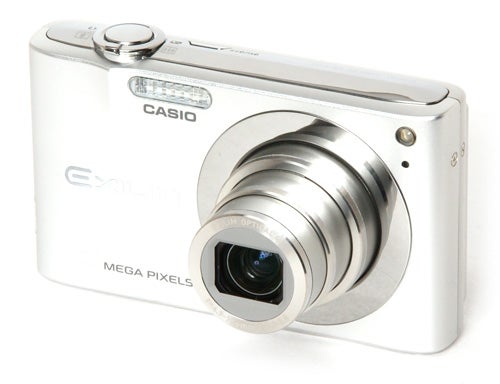
Verdict
Key Specifications
- Review Price: £142.00
Casio has just launched two new models in its ultra-compact Exilim EX-Z series. We’ll be taking a look at the range-topping Z200 later this week, but for today we’ve got the EX-Z100. The Z-series is not exactly noted for its diversity, being populated by 14 models most of which are variations on the metal-bodied 3x zoom ultra-compact format, with the only differences being size, shape and resolution. The Z100 is different though. It is the first Casio ultra-compact to feature a 28mm wide-angle lens with 4x optical zoom.
Longer zoom ranges and wide angle lenses are the latest bandwagon in the digital camera market, with most of the major manufacturers now fielding ultra-compact models with 28mm-equivalent lenses and zoom factors greater than the traditional 3x. While it does mean that there’s just as little difference between the various brands as there ever was, personally I’m in favour of it. I’d far rather manufacturers concentrate on useful features like better lenses instead of constantly stuffing more and more megapixels into already massively overcrowded sensors. 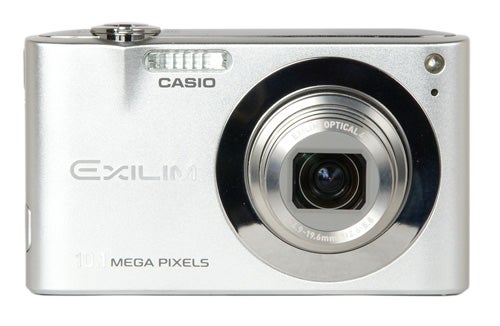
The main rivals for the EX-Z100 are the Fujifilm FinePix F480 (£80), the Olympus FE-350 Wide (£155), the Nikon CoolPix S600 (£165), the Sony Cyber-shot W170 (£170) and the Panasonic Lumix FX35 (£180). That makes the EX-Z100’s £142 price tag look quite reasonable, until you remember that the Nikon, the Sony and the Panasonic all have optical image stabilisation; the EX-Z100 does not.
As usual with Casio’s ultra-compact cameras, the initial impression is very favourable. The EX-Z100 is a good looking camera, with a slim pocket-friendly all-metal body finished in semi-matt silver with chrome details. Although not the smallest camera in the range (that honour goes to the tiny EX-Z80) it is nonetheless very small and light, measuring 93 x 55 x 21.2mm and weighing just 111g minus battery and card, although if you include the very large 1300mAh Li-ion battery that weight goes up to 145g.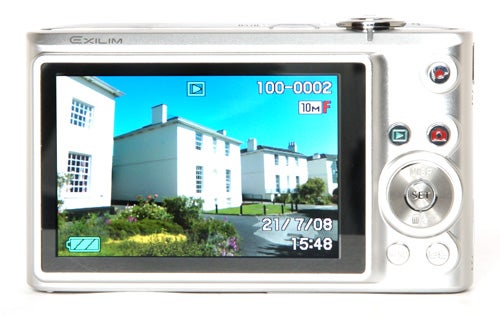
The layout of the Z100’s controls is very simple, with a rotary-bezel zoom control (stepped with eight positions) and just five buttons on the back of the camera, one of which is the video recording trigger. As with the rest of Casio’s cameras the main control is a permanent on-screen menu down the right of the wide-format monitor screen. Pressing the set button and then up or down on the D-pad accesses a useful variety of frequently-used options, including picture size, flash mode, drive mode, ISO setting, exposure compensation and the auto-shutter functions.
This feature, introduced on the Z80, is rather clever. There are three modes; smile detection, movement detection and auto-panning. The first of these is based on the face detection system and waits until your subject is smiling before taking a picture, but the other two modes are potentially more useful. The camera detects movement blur, and waits until everything in the frame is stationary before taking a picture. In a camera without image stabilisation this is a good way to avoid blurred photos. The sensitivity of these auto-detection functions can be adjusted via the same quick menu.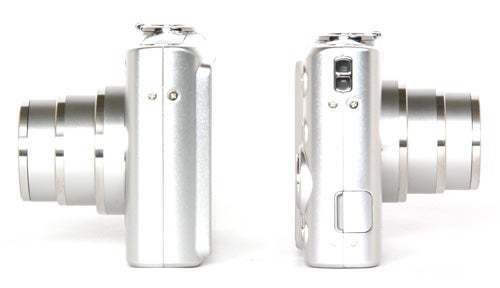
The Z100 also has a pretty good video mode, recording in 848 x 480 widescreen format at 30fps, although movie clips are limited to 10 minutes each and the optical zoom cannot be used during recording. There is also the YouTube video mode, which records at 640 x 480 resolution encoded in the H.264 video format used by the popular video sharing site.
The EX-Z100’s performance is also quite good. It starts up in approximately 1.7 seconds and shuts down again in about the same. Shot-to-shot time in single shot mode and maximum image quality is a bit slow however, at approximately 2.6 seconds per shot. In continuous shooting mode it is a little better at approximately two seconds per shot, but this is still very slow in comparison to some of its market rivals. The bottleneck must be writing the large files to the memory card, because the autofocus system is, as is usual for Casio cameras, very quick. It is also good in low light conditions, hardly slowing down at all In dim indoor lighting, and focusing in the dark at a range of a couple of metres with the AF assist lamp. 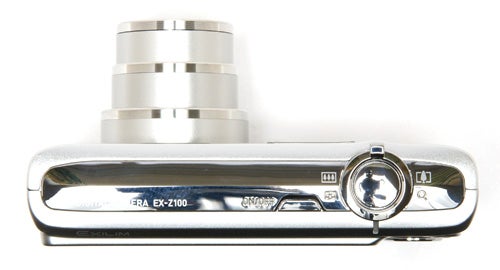
Battery performance is exceptionally good, as one might expect with such a large battery. Casio claims 400 shots on a full charge, and my experience while testing the camera would seem to confirm this.
Image quality is sometimes a problem for Casio cameras. In the case of the Z100 it’s not exactly a strongpoint, but it’s not too bad either. The new lens performs quite well, with good centre sharpness and very little wide-angle distortion, however corner sharpness is not so good, especially in the upper right of the frame. This is something I’ve noticed before on Casio compacts, and I really wish they’d sort it out.
The overall level of detail from the 10.1-megapixel sensor is very good, and the compression rate is very low, with some image files over 7MB, very large for a point-and-shoot compact camera. Dynamic range and colour depth could be a little better, but they are no worse than average for a camera in this class. The exposure system tends to preserve shadow detail at the expense of burned-out highlights.
High ISO noise control is better than average. While there is visible noise from 200 ISO upwards, it is very smooth and granular, so rather than smearing out colour it takes on the appearance of film grain, and even images shot at 800 ISO don’t look too horrible. 1600 ISO is pretty rubbish though, but then it nearly always is.
”’Verdict”’
The Casio Exilim EX-Z100 is a good example of a modern mid-range pocket compact. It is well made and sensibly designed, reasonably well priced, has some useful features and produces very good images under most normal conditions. The 28mm wide angle and 4x zoom range give it greater versatility than previous models, and the exceptional battery duration is a real bonus if you’re taking it on holiday. While it doesn’t particularly stand out in a crowded market it certainly won’t disappoint.
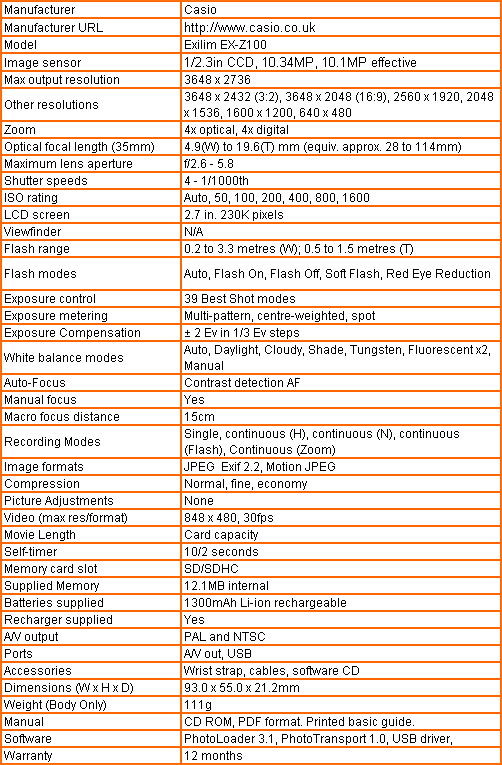
”A range of test shots are shown over the next few pages. Here, the full size images at the minimum and maximum ISO settings have been reduced for bandwidth purposes to let you see the full image, and a series of crops taken from original full resolution images at a range of ISO settings have been included in order for you to gain an appreciation of the overall quality.”
—-
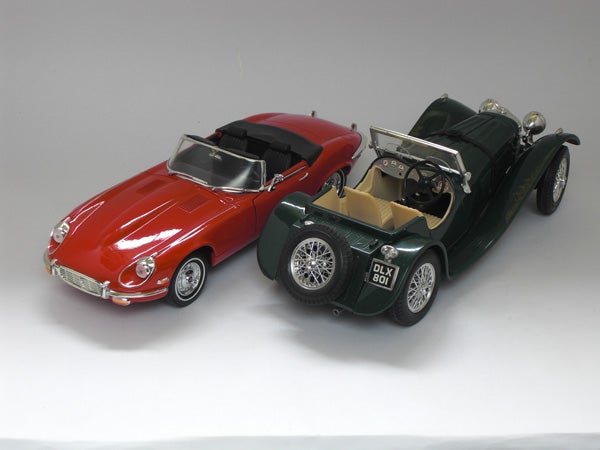
This is the full frame at 50 ISO.
—-

At the minimum ISO setting the image is nice and smooth, with good sharp detail.
—-
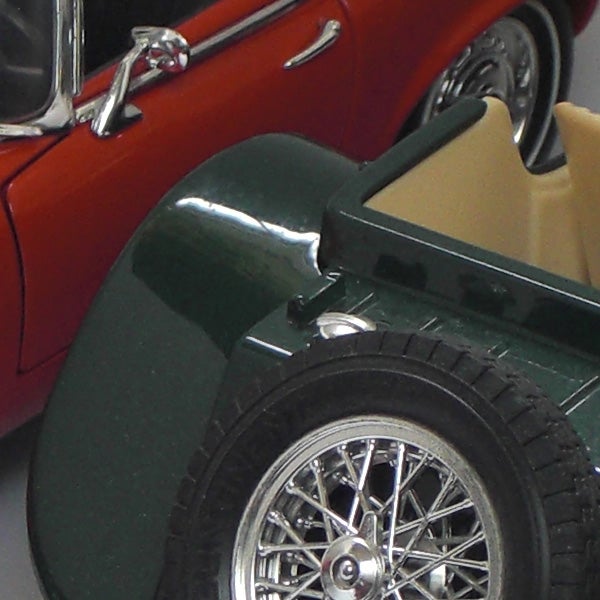
Much the same at 100 ISO.
—-

There is some noise appearing at 200 ISO, but the level of detail is still very good.
—-
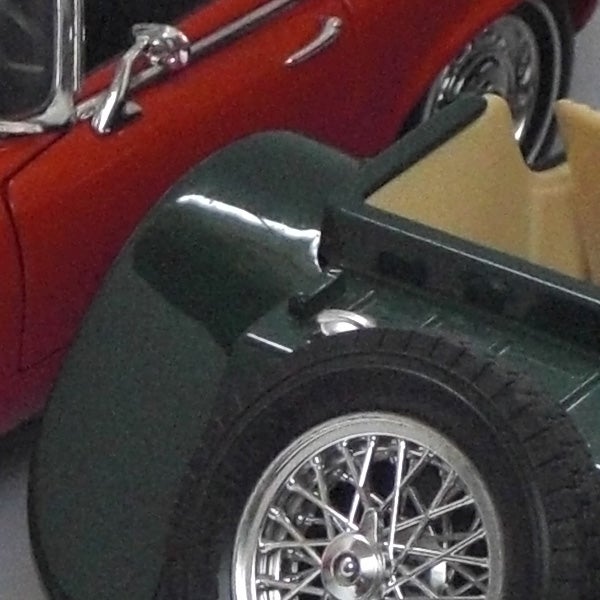
There is more noise at 400 ISO, but the noise reduction is fairly subtle and the image quality is still very good.
—-

At 800 ISO there is a lot of granular noise, but the overall colour balance is still very accurate, and the effect is not unpleasant.
—-
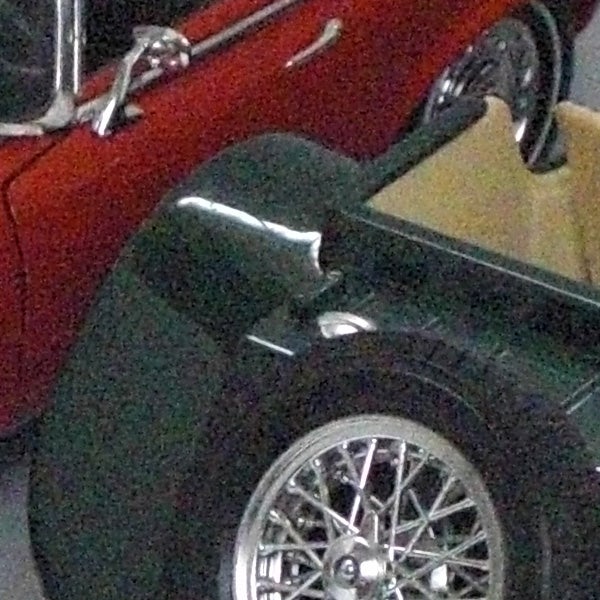
1600 ISO is there if you need it, but is best avoided.
—-
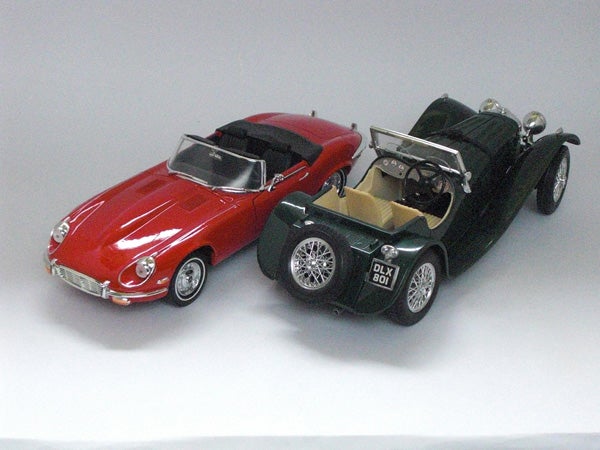
This is the full frame at 1600 ISO.
—-
”A range of general test shots are shown over the next two pages. In some cases, the full size image has been reduced for bandwidth purposes, and a crop taken from the original full resolution image has been placed below it to show the overall image quality. Some other pictures may be clicked to view the original full-size image.”
—-
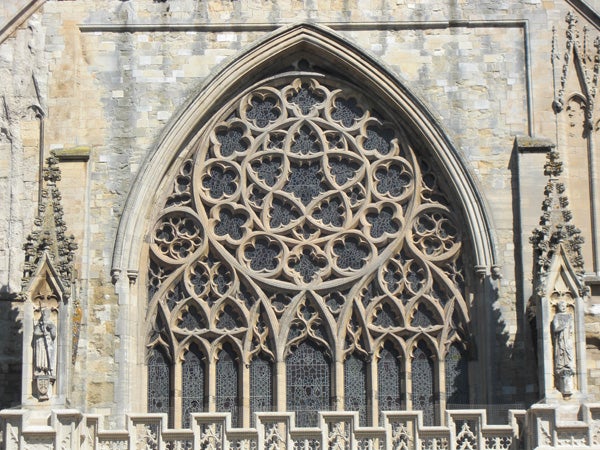
Here’s the usual detail test shot of the West Window of Exeter Cathedral, for you to compare with other cameras. See below for a full res crop, or click to see the whole picture, but be warned that it is over 6MB.
—-

The level of detail in this shot is exceptionally good for a pocket compact, with no compression artefacts thanks to the huge file size.
—-
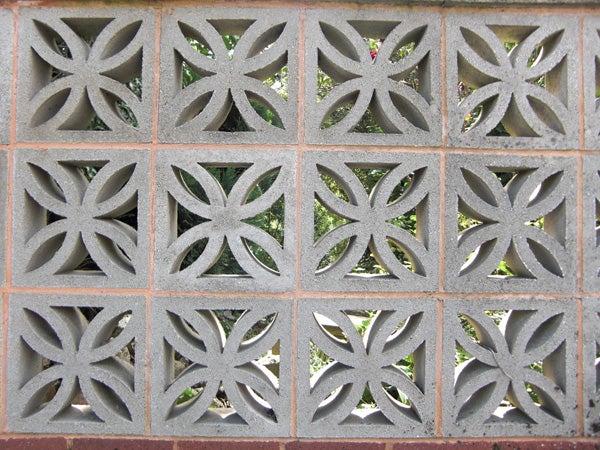
The new wide-angle lens produces very little barrel distortion.
—-
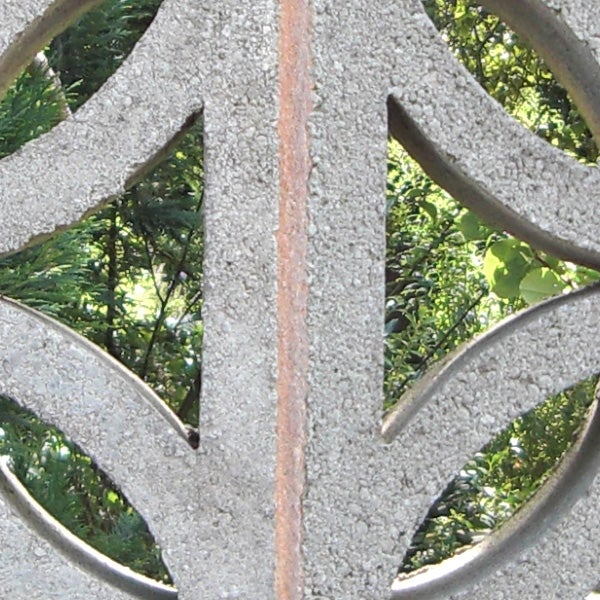
Centre sharpness is very good, with plenty of detail.
—-
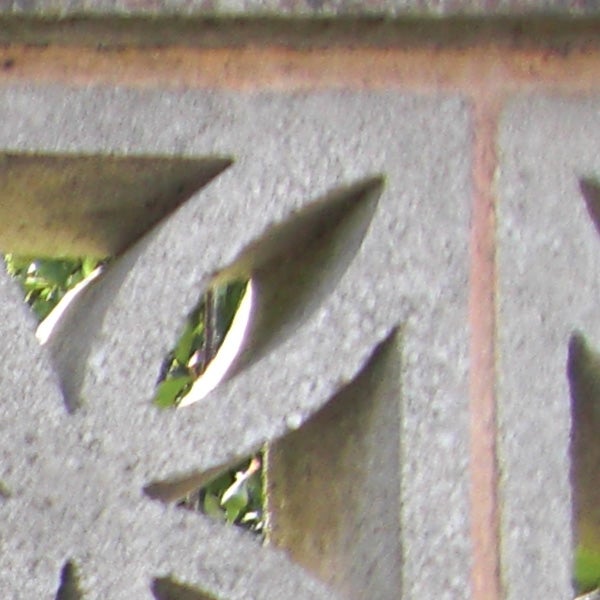
Corner sharpness however is not so good, especially in the top right corner of the frame.
—-
”Here are some general test shots to help evaluate the camera’s overall image quality, including the zoom range of the lens. Some pictures may be clicked to download the full size original image.”
—-
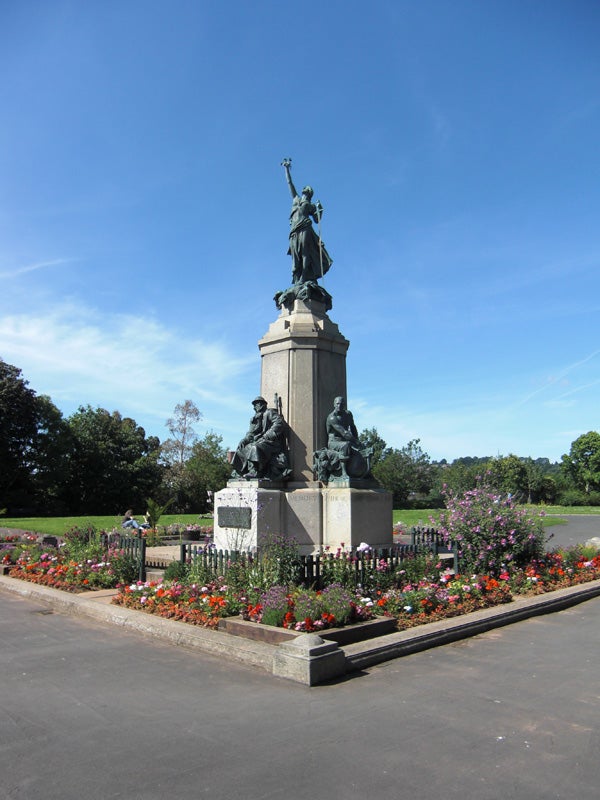
The wide angle 28mm lens means you can fit large subjects into the frame.
—-

The telephoto end is equivalent to 114mm, about average for a compact camera.
—-

The overall exposure of this shot is good, but the highlights on the roof have been burned out.
—-
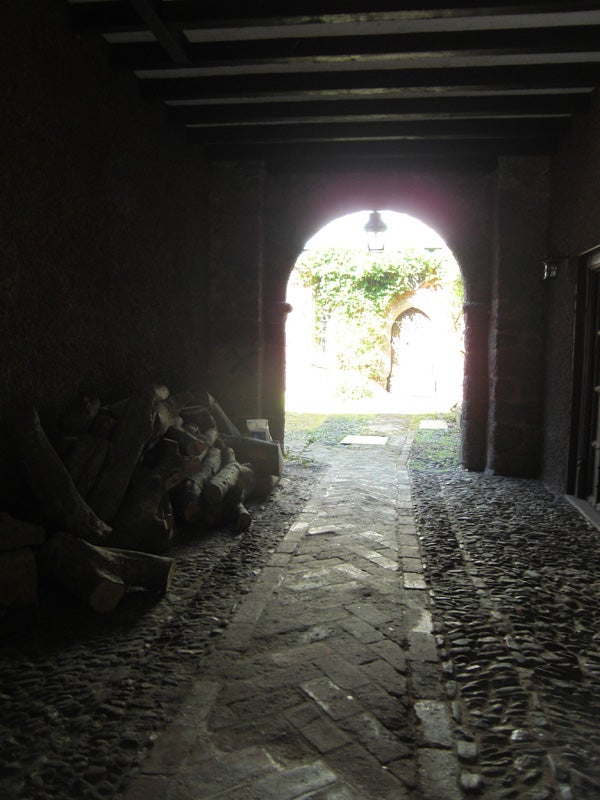
The Z100 tends to capture shadow detail at the expense of burned-out highlights.
—-
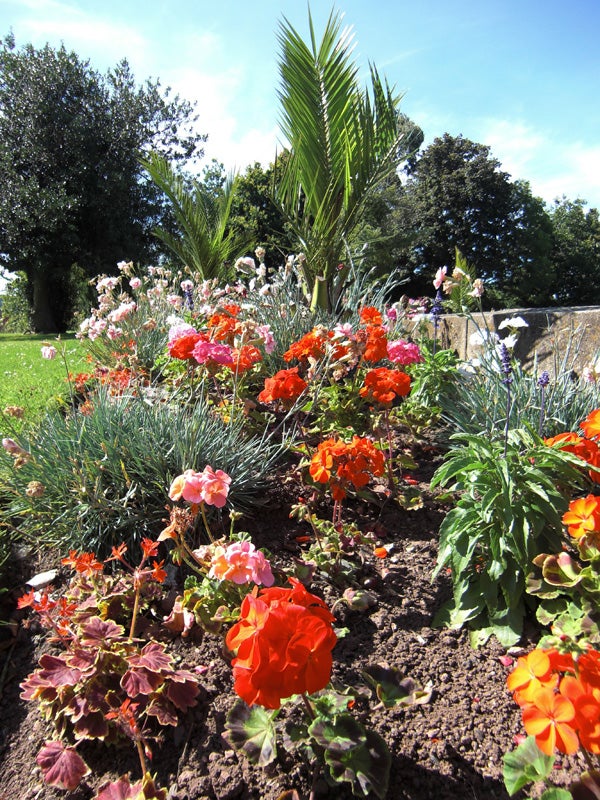
Colour rendition is bright and vibrant, but possibly a bit over-saturated.
—-

Once again highlights have been lost to preserve shadow detail.
—-
Trusted Score
Score in detail
-
Value 7
-
Image Quality 7
-
Build Quality 8
Features
| Camera type | Ultra Compact |
| Megapixels (Megapixel) | 10.1 Megapixel |
| Optical Zoom (Times) | 4x |

